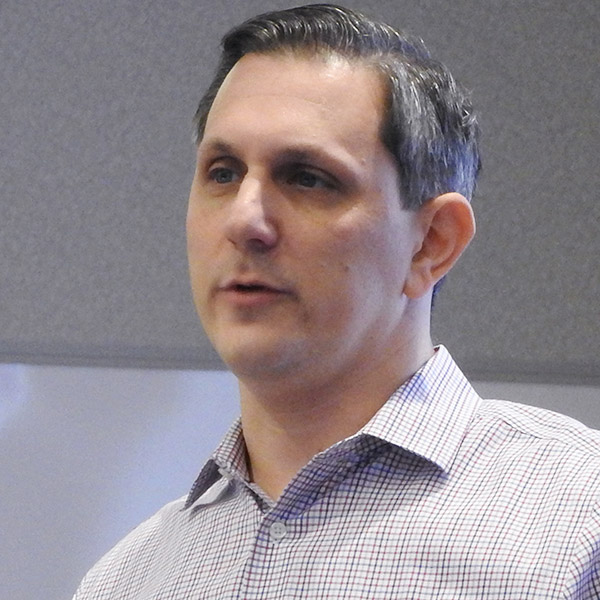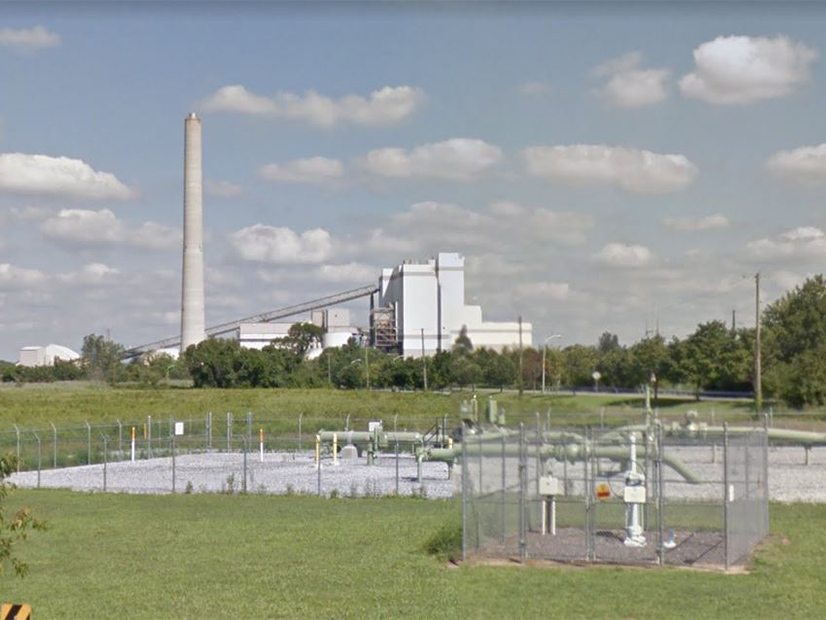Planning Committee
New Interconnection Rules Endorsed
PJM’s proposal regarding the development of new rules for the interconnection process won near unanimous support from stakeholders at last week’s Planning Committee meeting.
The proposal, developed in the Interconnection Process Reform Task Force, received 275 votes in support (99%), with only one member voting against it. In a vote asking stakeholders if they preferred the proposal over maintaining the status quo, the PJM proposal again received 275 yes votes (99%).
 PJM’s new interconnection process framework overview. | PJM
PJM’s new interconnection process framework overview. | PJM
Jack Thomas of PJM’s Knowledge Management Center reviewed the RTO’s proposal, first presented at the December PC meeting. (See “Interconnection Process Proposals,” PJM PC/RMC Briefs: Dec. 14, 2021.) Three other proposals originally presented at that meeting were pulled by their sponsors, leaving only the PJM proposal to be considered.
Thomas said the PJM proposal, which consisted of more than 90 design components in the matrix developed at the task force, includes moving away from the concept of “first come, first served” projects in the queue to a “first ready, first served” concept. The change will ensure projects that are ready to be built are prioritized instead of allowing speculative projects to fill the interconnection queue.
The proposal also adds language saying that if a facility study isn’t needed and no network upgrades are necessary for a project, then it could move to the final agreement stage early, speeding up the process. The study window for projects is also proposed to be scheduled for 710 days, or just under two years.
 Jason Connell, PJM | © RTO Insider LLC
Jason Connell, PJM | © RTO Insider LLC
Jason Connell, director of infrastructure planning for PJM, said the RTO and stakeholders worked “very diligently” over the last several months to craft a solution that could receive majority support from members.
“I understand we weren’t able to incorporate everyone’s suggestions and changes throughout the entire process, but if feedback or input was provided, it was carefully considered,” Connell said.
Iker Chocarro of RWE Renewables, one of the sponsors of an alternative proposal, thanked PJM for all the work done on the issue over the last year. RWE decided to pull its proposal from consideration because most of its content was found in the PJM proposal except for additional details on affected systems, he said.
“We would like to encourage PJM to keep working on affected-system issues,” Chocarro said.
Arash Ghodsian of EDF Renewables called the process a “great collaboration effort” that brought a popular proposal forward for a vote.
“I think we’re in a good place,” Ghodsian said. “It was a great accomplishment.”
Paul Sotkiewicz of E-Cubed Policy Associates said PJM’s planning and interconnection teams did an “excellent job” in coming up with a proposal with widespread support among stakeholders. Sotkiewicz singled out Connell for his work, saying he went out his way to listen to concerns and would come back with “reasonable explanations” for the decisions that were made.
“Even if we didn’t get everything we wanted, PJM was extremely thoughtful,” Sotkiewicz said. “While this interconnection process was contentious, this is the way the stakeholder process should work.”
Interconnection Process Transition
Besides the vote on the interconnection process rules, stakeholders also heard plans on how PJM will transition into a new interconnection process.
Thomas provided a first read of two transition proposals from the work done at the Interconnection Process Reform Task Force.
An issue charge for work to be completed on the interconnection issue was approved at the April PC meeting, with task force meetings starting later that month. (See “Interconnection Process Reform Endorsed,” PJM PC/TEAC Briefs: April 6, 2021.) Thomas said that while PJM and stakeholders were working through the issues in the task force, they realized a transition process also needed to be discussed.
PJM held a nonbinding poll focusing on the interconnection transition proposals, with a total of 545 companies participated, including 290 RTO members. The PJM proposal received 92% support from all stakeholders and 93% support from members, while a proposal from National Grid Renewables received 13% support from all stakeholders and 18% support from members.
Thomas said the PJM proposal features an expedited interconnection process of “fast lane criteria” that includes projects with any cost allocations of $5 million or less, amounting to about 450 impacted projects with a completion date of 18 months. He said the $5 million cutoff should cover the bulk of substation and terminal equipment upgrades and, as a result, shorten durations for facilities to study the work needed to be done.
The National Grid proposal for fast lane criteria in the expedited process has no network upgrades or cost allocation set. The expedited process in the proposal would include around 300 projects with an estimated completion date of 12 months.
Thomas said the advantages of the PJM proposal is that it consolidates the transition into two distinct parts: the fast lane criteria and two transition cycles. He said the fast lane is bound by projects that can proceed upon completion of a facilities study, while the transition cycles include more complicated projects in the interconnection queue.
The PJM proposal also preserves the ability for backlogged projects that would have received an interconnection service agreement under the existing process if not for delays to remain in the queue, Thomas said, and it also reduces the time that the queue is closed for the transition.
Connell said the transition proposal was an “extremely controversial topic” for stakeholders, but compromises were agreed upon to push options forward.
One stakeholder said they were supportive of the PJM proposal, but his company had some small issues to address. The stakeholder asked PJM to reconsider the $5 million fixed limit in the fast lane criteria, calling it a “bit arbitrary,” and requested that if a limit is set, it should be done on a per-megawatt basis.
“There could be an issue of smaller projects being able to get through relative to larger projects,” the stakeholder said.
Carl Johnson of the PJM Public Power Coalition said he “did not imagine” that PJM and stakeholders would be able to come together on transition proposals when the process first started. Johnson said stakeholders understood that they needed to move forward and come to a compromise.
“We should all bask in the glow of a very successful stakeholder process and hope that when it gets to FERC it’s similarly successful,” Johnson said.
Stakeholders will be asked to vote on the proposals at the February PC meeting.
Deactivation Process Timing
David Egan, manager of PJM’s system planning modeling and support department, provided a first read of a proposed deactivation process timing update, presenting a problem statement, issue charge and revisions to Manual 14D and the tariff.
Egan said the current timing of 30 days in the tariff to complete deactivation studies “works fine” when there’s only a single deactivation notice in a period. But when multiple deactivation requests are received, the 30-day timetable is “insufficient” to determine any adverse impacts on reliability.
Trends in state energy policies could lead to more large volume deactivation notices in the future, Egan said, putting more pressure on PJM staff in the deactivation studies. Egan said the short duration puts “undue burden” on PJM’s planning and operations staff, along with the staff of transmission owners making deactivation requests, to make reliability evaluations and mitigation determinations.
“All this work is being stacked up on top of each other, and it’s very difficult to come up with holistic solutions,” Egan said.
The proposed issue charge calls for tariff and manual changes that “provide more time to complete analyses, allow additional and improved studies and provide the ability for more efficient work control and consistency regarding timing of deactivation studies,” Egan said.
PJM is proposing quarterly study times for deactivations, with study periods beginning Jan. 1, April 1, July 1 and Oct. 1. The RTO staff will study deactivations as a batch with reliability notifications to be made by end of February, May, August and September, respectively.
To request a deactivation, a generation owner must submit notice:
- between Jan. 1 and March 31 to deactivate July 1 or later;
- between April 1 and June 30 to deactivate Oct. 1 or later;
- between July 1 and Sept. 30 to deactivate Jan. 1 of the subsequent year or later; or
- between Oct. 1 and Dec. 31 to deactivate April 1 of the subsequent year or later.
Egan said the quarterly schedule will allow sufficient time for additional required seasonal, interim year and short-circuit analyses, scheduling upgrades and cost estimates. He said the new schedule would also allow PJM operations to identify additional needed operational measures.
PJM is seeking endorsement of the issue charge at the February PC meeting through the “quick fix” process because its “just targeting the current tariff timing” for deactivations, Egan said.
 Sharon Midgley, Exelon | © RTO Insider LLC
Sharon Midgley, Exelon | © RTO Insider LLC
Sharon Midgley of Exelon said her company is “sympathetic” to the issues being raised by PJM, agreeing the problem should be discussed by stakeholders. But Exelon staff had concerns over using the quick-fix process on the issue because of the complexities in the deactivation process that could arise by modifying the schedule.
“We think the proposal does change the rules around a generator notice for deactivation, which is a pretty fundamental change,” Midgley said.
Johnson said he agreed with Exelon in trying to avoid the quick-fix process on the issue, saying it is a “pretty substantial change.”
Egan said PJM staff will discuss what stakeholder process to use before the next PC meeting.
Transmission Expansion Advisory Committee
Market Efficiency Update
Nick Dumitriu, principal engineer in PJM’s market simulation department, provided an update on the 2020/21 long-term market efficiency window at last week’s Transmission Expansion Advisory Committee meeting.
Dumitriu identified four projects that are ready for a final recommendation by the PJM Board of Managers. They included:
- the 230-kV Juniata-Cumberland line reconductor, a $9 million upgrade in the PPL zone. The estimated in-service date is Dec. 1, 2023.
- the 230-kV Charlottesville-Proffit line series reactor, a $11.38 million upgrade in Dominion. The estimated in-service date is June 1, 2023.
- the 230-kV Plymouth Meeting-Whitpain terminal upgrades, a $620,000 project in PECO. The estimated in-service date is June 1, 2025.
- the 138-kV French’s Mill-Junction terminal upgrades, a $770,000 project in APS. The estimated in-service date is April 1.
The board will vote on the projects at its upcoming meeting in February.
Generation Deactivation Notification
Phil Yum of PJM provided an update on recent generation deactivation notifications.
Yum said PJM completed its reliability analysis on two battery deactivation requests in the ComEd transmission zone, including the Joliet Energy Storage battery and the West Chicago Energy Storage battery, which are both six years old. No reliability violations were identified, and they can be deactivated by Feb. 8.
PJM also received three additional deactivation notices since its last TEAC meeting in November, including New Jersey’s last two remaining coal generation plants: the 219-MW Logan Generating Plant and the 240-MW Chambers Cogeneration, both owned by Starwood Energy and located in the Atlantic City Electric transmission zone. Starwood requested a deactivation date of April 1, and a reliability analysis is currently underway.
The 9.3-MW Orchard Hills Landfill in the ComEd transmission zone in Illinois made a requested deactivation date of March 31. A reliability analysis is currently being conducted by PJM.


